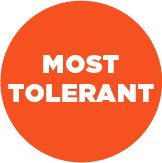Sow bug
See how they move!
SCIENTIFIC NAME: Isopoda
Number Of Species/Distribution
There are about 10,000 marine, freshwater, and terrestrial species worldwide.
Diet/Feeding
Different species of sow bugs get their nutrients in different ways
Most species of sow bugs are scavengers, feeding on dead and injured organisms.
They can also be plant feeders and detritivores- which feed on decaying organic matter.
Some species are parasites, living on fish or other crustaceans by feeding on their tissue fluids.
Habitat
Sow bugs can be found in all types of aquatic habitats
Freshwater isopods live mainly along the bottoms of ponds, lakes, streams, and springs, but have also been recorded at depths of as much as 55 m.
Freshwater isopods are usually closely associated with the substrate, or aquatic plants,which provide shelter
SOW BUGS: INTERESTING FACTS
Sow bugs are the poorest swimmers of all freshwater crustaceans. They can barely swim at all and movement is usually restricted to a slow crawl.
Sow bugs make up the second most diverse group of crustaceans.
Life Cycle
Sow bugs reproduce sexually (between a male and a female) and breeding occurs throughout the year.
During mating, the males grasp the females using specialized appendages (called pleopods), and they may remain attached for months.
Sperm are transferred from the male to the female, and after 1 to 10 months, fertilization occur and the eggs pass into a brood pouch (where the eggs develop, also known as a marsupium).
After incubation, the newly hatched young remain in the pouch for up to a month.
The newly hatched young look like miniature versions of adults, and progress through at least 15 stages (known as instars) before reaching maturity.
Most freshwater sow bugs have a lifespan of about one year.
Role in Food Chain
Sow bugs are an important link in the food chain
They help recycle dead and decaying material from the stream bed back into living tissue.
They are an important food source for many stream fishes.
Sources
Brusca, R. C, and Brusca, G. J., 2003. Invertebrates, 2nd ed. Sinauer Associates, Inc., Publishers, Massachusetts. Page 534, 537.
Canada's Aquatic Environments (2002). Isopoda. Available here.




